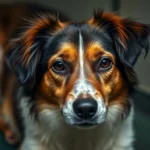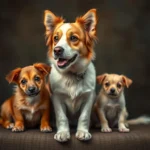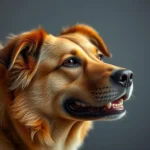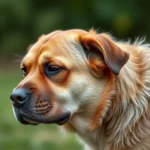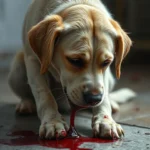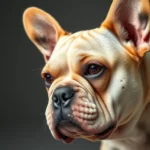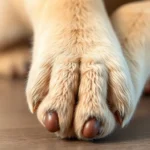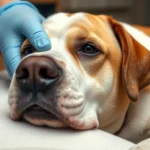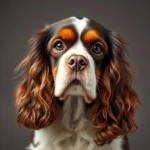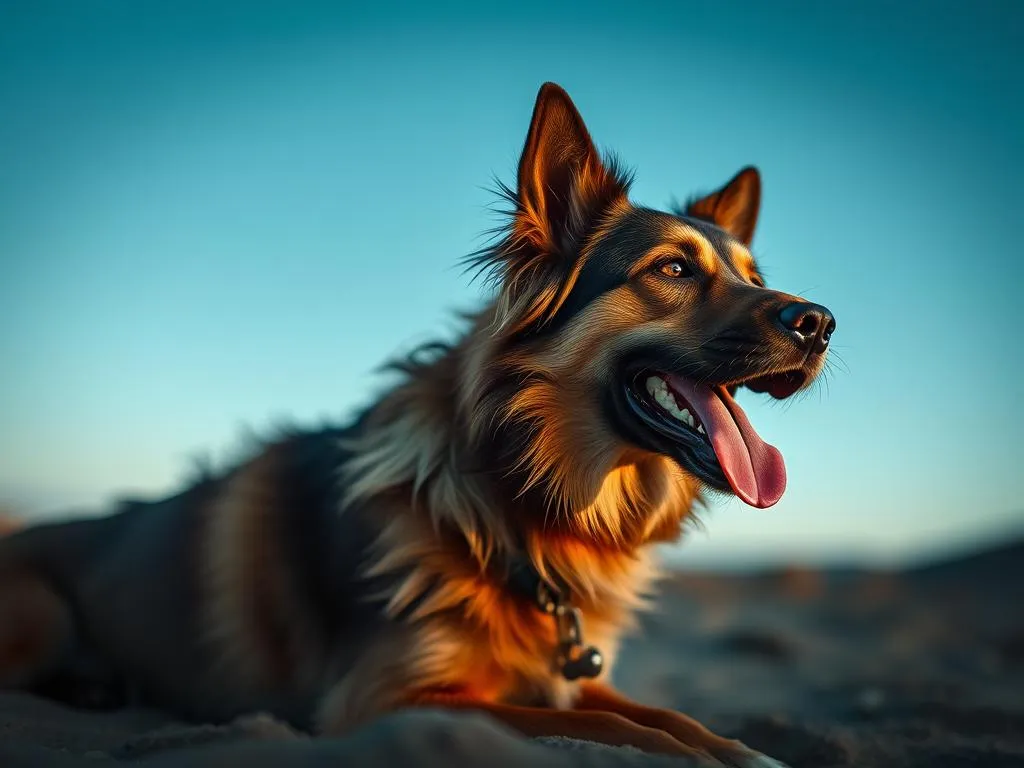
Introduction
Entropion is a condition that affects a dog’s eyelids, causing them to roll inward. This inward rolling can lead to irritation and discomfort as the eyelashes and eyelid skin rub against the surface of the eye. Understanding entropion in dogs is crucial not only for the welfare of our pets but also for maintaining their quality of life.
Consulting a vet when you notice any signs of entropion is vital. They can provide a diagnosis and recommend appropriate treatment options. In this article, we will delve deep into what entropion is, its symptoms, diagnostic procedures, treatment options, prevention strategies, and more.
Understanding Entropion in Dogs
What is Entropion?
Entropion is a medical term that describes a condition where the eyelids fold inward. This abnormality can occur in one or both eyes and can lead to significant discomfort and potential vision problems. Entropion can be classified into two main types:
- Primary Entropion: This form is often hereditary and occurs due to genetic factors that cause the eyelids to develop abnormally.
- Secondary Entropion: This condition arises from other issues such as scarring of the eyelids, inflammation, or muscle problems that lead to the eyelids rolling inward.
Causes of Entropion
Several factors can contribute to the development of entropion in dogs:
- Genetic Factors: Certain breeds are more predisposed to entropion due to their genetic makeup.
- Conformational Issues: Brachycephalic breeds, like Bulldogs and Pugs, are particularly prone to this condition because of their facial structure.
- Age-related Changes: As dogs age, the muscles around the eyelids can weaken, leading to entropion.
- Other Health Issues: Conditions such as eyelid abnormalities or inflammatory diseases can also cause changes in eyelid position.
Symptoms of Entropion
Common Signs to Look For
Identifying entropion early can significantly impact a dog’s well-being. Common symptoms include:
- Visual Symptoms: Dogs may squint or blink excessively. You might notice tearing or discharge from the eye, indicating irritation.
- Behavioral Changes: A dog with entropion might rub its eyes with its paws or against furniture. Additionally, they may show reluctance to play or engage in activities due to discomfort.
Severity of Symptoms
The severity of symptoms can vary widely. In mild cases, a dog may only exhibit slight tearing or squinting. In more severe cases, the dog might develop corneal ulcers or infections due to constant irritation. Early detection of entropion is crucial for effective treatment and to prevent complications.
Diagnosis of Entropion
Veterinary Examination
When you suspect your dog has entropion, a visit to the veterinarian is essential. During the examination, the vet will assess the dog’s eyes and eyelids carefully. They will look for signs of inward rolling and any accompanying symptoms.
Diagnostic Tests
To confirm a diagnosis of entropion, the veterinarian may perform several diagnostic tests, including:
- Fluorescein Staining: This test involves applying a special dye to the eye to identify any corneal damage caused by irritation.
- Imaging: In some cases, imaging techniques like ultrasound might be used to evaluate the structure of the eye and surrounding tissues if there are concerns about underlying issues.
Treatment Options for Entropion
Non-Surgical Treatments
In some cases, particularly in mild instances of entropion, non-surgical treatments can help manage the condition:
- Temporary Measures: Lubricating eye drops can alleviate discomfort and protect the cornea from further damage.
- Medical Management: Anti-inflammatory medications may be prescribed to reduce swelling and irritation around the eye.
Surgical Interventions
For more severe cases of entropion, surgery is often the best option. Common surgical procedures include:
- Eyelid Tacking: This procedure temporarily tacks the eyelid in place to prevent it from rolling inward.
- Corrective Surgery: More permanent surgical options involve reconstructing the eyelid to return it to its proper position.
Post-operative care is crucial for recovery. Your veterinarian will provide specific instructions on how to care for your dog after surgery, including medications and follow-up appointments.
Cost Considerations
The cost of treating entropion can vary significantly based on the severity of the condition, the type of treatment required, and the veterinary clinic. On average, costs for surgical intervention can range from $500 to $1,500, with non-surgical treatments being more affordable. Ensure to discuss payment options and potential financial assistance with your vet.
Prevention Strategies
Genetic Considerations
Responsible breeding practices can help reduce the incidence of entropion in certain breeds. If you own a breed known to be at higher risk, consider working with reputable breeders who prioritize the health of their dogs.
Regular Veterinary Check-Ups
Routine veterinary check-ups are essential for early detection of any eye issues, including entropion. Regular eye exams allow for monitoring of any changes and ensure that any potential problems are addressed promptly.
Pet owners should also be vigilant and monitor their dog’s eye health at home. If you notice any signs of discomfort or abnormal eye behavior, it’s essential to consult with your veterinarian.
Living with a Dog Diagnosed with Entropion
Lifestyle Adjustments
If your dog has been diagnosed with entropion, you may need to make some lifestyle adjustments:
- Comfort Measures: Ensure your dog has a comfortable and safe environment that minimizes eye irritation. Avoid dusty or smoky areas, and limit exposure to bright sunlight.
- Monitoring Symptoms: Keep a close eye on your dog’s eyes and behavior. Report any changes to your vet immediately.
Emotional Support
Having a dog with a medical condition can be emotionally taxing for both the pet and the owner. Understanding the psychological impact is essential; seeking support from veterinary professionals or pet support groups can be beneficial.
Frequently Asked Questions (FAQs)
Can entropion resolve on its own?
In most cases, entropion does not resolve on its own and often requires treatment to prevent complications.
What breeds are most susceptible to entropion?
Breeds such as Bulldogs, Pugs, and Shar Peis are particularly susceptible to entropion due to their conformational features.
How long does recovery from surgery take?
Recovery time varies, but most dogs will begin to show improvement within a few weeks post-surgery. Full recovery may take up to several months.
Are there any home remedies for entropion?
While there are no effective home remedies to treat entropion, keeping the eyes lubricated with veterinary-approved drops can help manage discomfort.
What should I do if I suspect my dog has entropion?
If you suspect your dog has entropion, schedule an appointment with your veterinarian as soon as possible for an evaluation.
Conclusion
Understanding entropion in dogs is essential for pet owners. It’s a condition that can lead to significant discomfort and health issues if not diagnosed and treated promptly. Early detection and intervention can make a world of difference in your dog’s quality of life.
As responsible pet owners, we must prioritize our furry friends’ eye health and consult a veterinarian for any concerns. By being proactive, we can ensure our dogs lead happy, comfortable lives free from the pain associated with entropion.
Call to Action
If you suspect your dog may be suffering from entropion, reach out to your veterinarian promptly. Your dog’s health is paramount, and early intervention can prevent further complications. We encourage you to share your experiences or questions regarding entropion in the comments or on social media.
